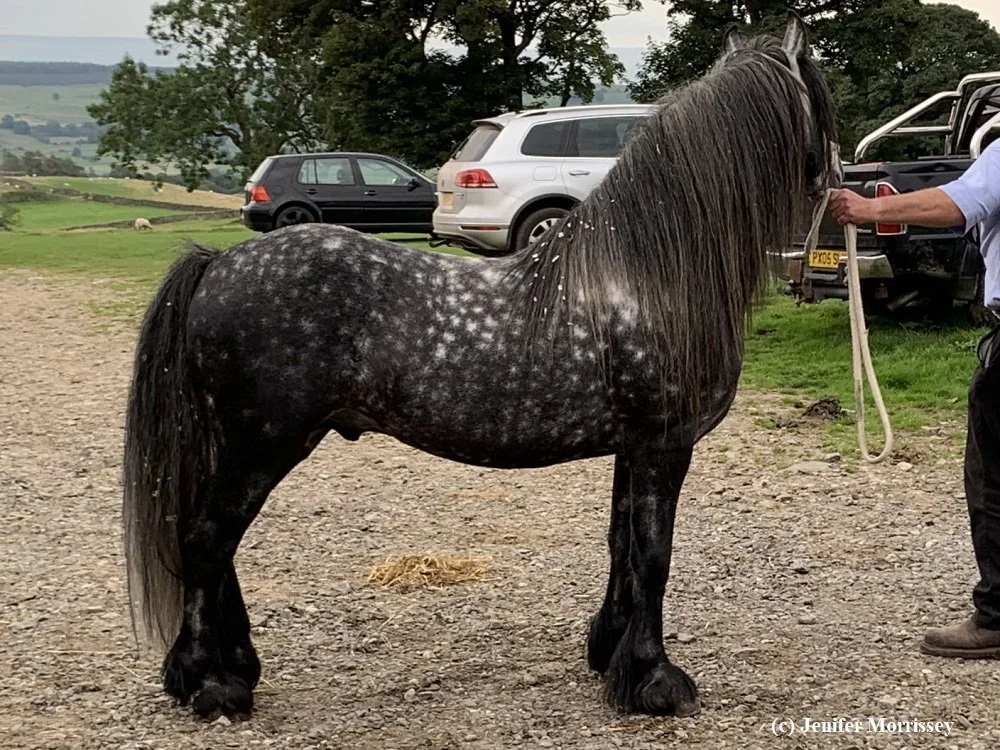Imperial is Maturing into Her Name!
/Two-year-old Fell Pony filly Drybarrows Imperial, starting to resemble her name!
My two-year-old Fell Pony filly Drybarrows Imperial has me completely captivated at the moment. I purchased her sight unseen from her photos and videos on the Hill Bred Gems Online Auction as a weanling. She arrived here at nine months old and took a full year to settle into my feeding and management program. During that year, I assumed her breeder named her for her lineage. Her uncle is the highly regarded Drybarrows Dynasty, and Imperial seemed a fitting name for a relation to this stallion.
My Imperial’s maternal uncle, the well-regarded Drybarrows Dynasty in Cumbria in 2022. He was distracted by something when I took this photo so he’s turned his head away from the camera.
In the past several weeks, though, Imperial has shown me that her name is as much about her as her relation. She has a calm regal demeanor most of the time (she’s just two so can be forgiven for the occasional evidence of immaturity!) She makes a point of greeting me with a majestic manner, or if she’s at a distance, she lifts her head with that same stately look to acknowledge my presence. She’s very particular about how a halter is put on her head, as though it should only be done in a way that has ultimate respectability for her royal nature. If I ever have a stall in the barn open, she immediately enters and turns to look out over the yard as though she owns the place and is perfectly at home overseeing it!
IMperial acknowledging my presence one night at dusk (hence the blurry image!)
At this point in my Fell Pony career, I have a number of ponies that I have known for more than a decade and in some cases almost two. I therefore know them very well and I usually see in their offspring a similar temperament. As an outcross, Imperial is teaching me the joy of discovery of new Fell Pony personalities. It’s been an unexpected benefit of bringing in new blood!
© Jenifer Morrissey, 2025
You can read about other discoveries I have made about the Fell Ponies in my life in my book What an Honor, available internationally by clicking here or on the book cover.
























































